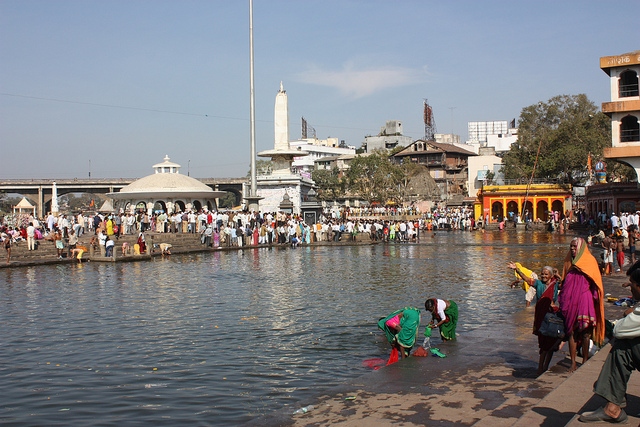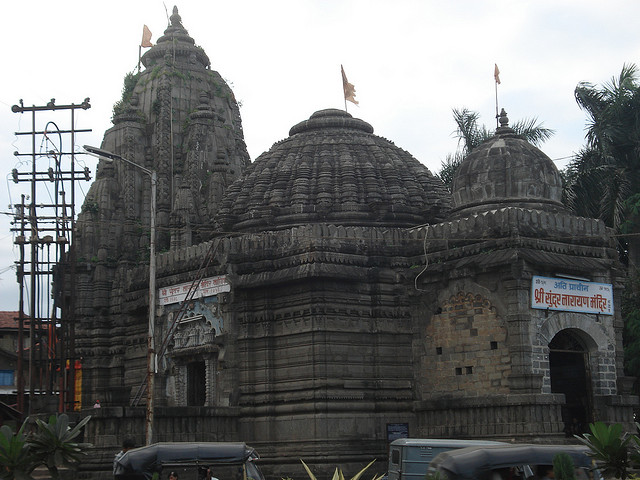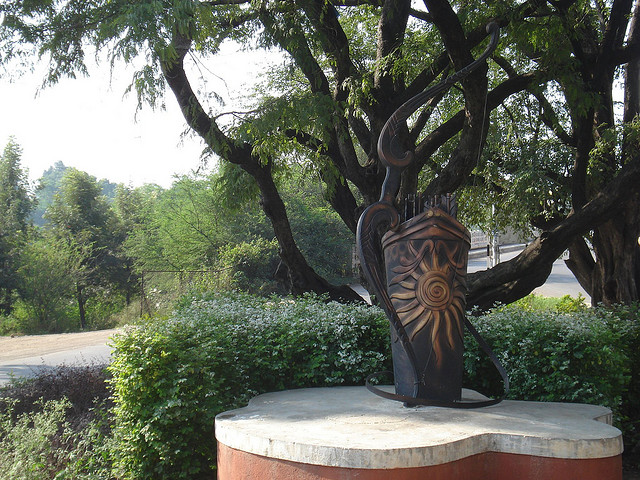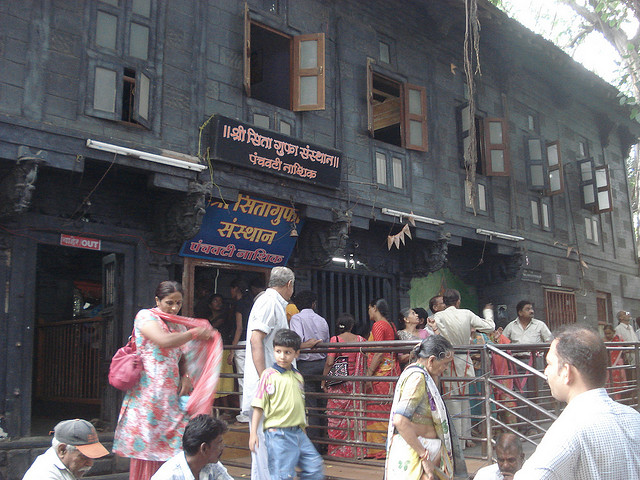A Vaishavite temple on the lofty west bank of the Godavari, Sundarnarayan temple is built by Gangadhar Yashwant Chandrachud in 1756. The main deity Lord Vishnu, flanked by Lakshmi and Saraswati adorns the sanctum of the temple. There are small carvings of Hanuman, Narayana and Indira on the walls. The east-facing temple has three porches with balcony seating, lobed arches and globular domes. Angled eaves and serpentine pediments head the doorways inside the porches.
The temple presents imposing architecture especially the vaulted niche, which strikes a chord with the Mughal sculpture. Other significant feature of this finely carved stone temple is that it is erected at such an angle that on 21st March, rays of the rising Sun first fall exactly upon the idols.




